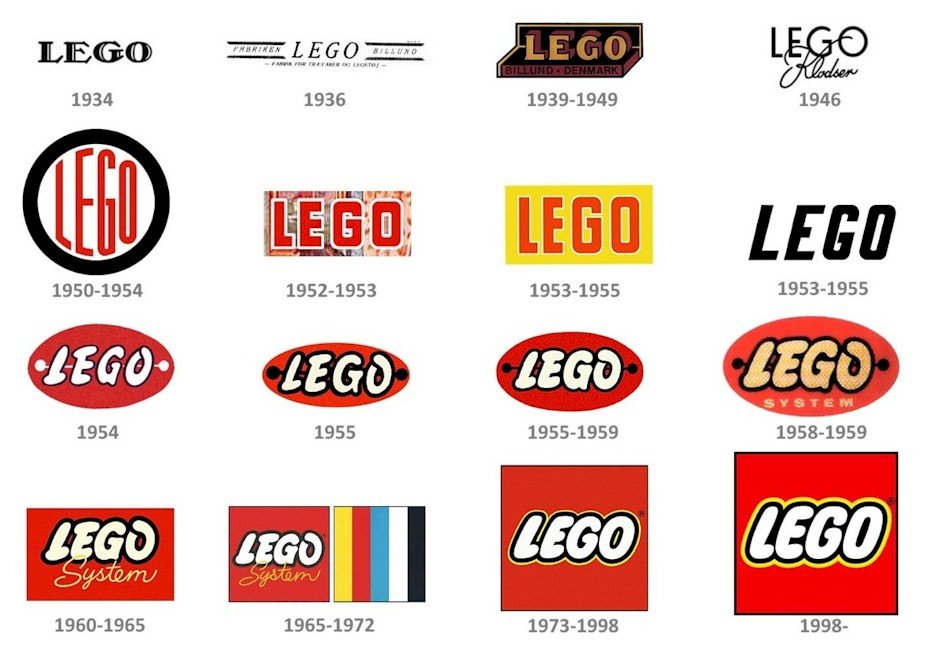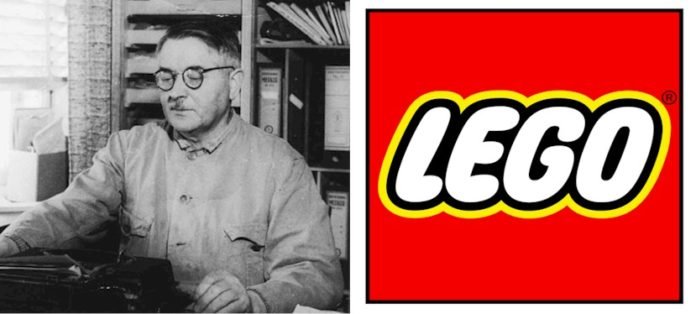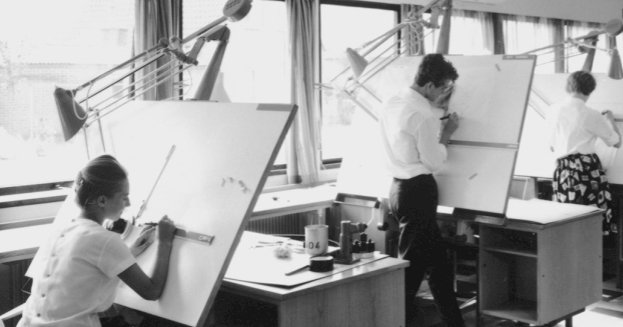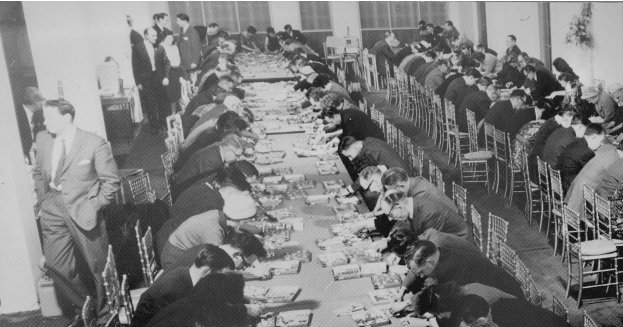This is the LEGO Logo and the History Behind the Company.
A favorite of kids (and many adults) for generations, LEGOs are some of the most immediately recognizable toys globally. An example of smart business and branding, the LEGO Group has managed to turn its building blocks into an internationally successful company, producing an ever-growing variety of toys and several media productions such as movies and video games, several retail stores, and even a few amusement parks. The LEGO logo is every bit as recognizable as the company itself. In this article, we’ll take a look at the origins of LEGO, the history of the logo, and the role their logo has played in the company’s worldwide success.
This is the evolution of the Lego Logo. As you can see from 1934, the logo has gone through many changes. It seems they were trying to find their brand but struggling a bit. I think they finally nailed it in 1998.

The History of Lego
The LEGO Group was founded on August 10, 1932, by a man named Ole Kirk Christiansen. Mr. Christiansen decided to call his company “LEGO” based on the double meaning of the word – it’s derived from the Danish words “leg godt,” which means “play well,” and in Latin, “lego” means “I put together.”
Mr. Christiansen didn’t set out to create a toy company at first, though. Instead, he started a woodworking shop creating furniture, ladders, and other such items. To demonstrate his products, Christiansen would build miniature models of them. He soon realized that these miniature models were trendy among children as playthings and, at the height of the Great Depression, they were easier to sell.
Thus, the concept of LEGO toys was born. It wasn’t until 1948, though, that LEGO began producing the interlocking blocks they are now known for. At first, the bricks didn’t gain a lot of traction. Metal and wooden toys were still the trends, and the market hadn’t really warmed up to the idea of plastic toys yet. Still, Christiansen and LEGO stuck with the production of their plastic “LEGO bricks,” even moving away from the production of metal and wooden toys to focus on them entirely.
It turned out to be a good move. Over the years, the company continued to grow and expand, posting consistent positive earnings and growth save for a few short years in the early 2000s, where they had a bit of a downturn. In 2016, LEGO reported its highest earnings of all time, bringing in a total of $5.17 billion.
It isn’t just LEGO bricks that the company is involved in, though. In 2014, The LEGO Group and Warner Bros released The LEGO Movie, which received almost unanimous praise and had one of the highest-grossing openings of any animated movie. LEGO continued their expansion into media, releasing many video games and another animated film, The LEGO Batman Movie, in 2017. In addition to this, the company has also opened up several retail stores where they sell their products and a few amusement parks called Legoland.
All in all, it’s been almost a century of success for LEGO as they grew to be one of the world’s largest toy brands then expanded beyond toys in several exciting ways. What role, though, did the company’s logo play in this success?
Looking For a Logo Designer?
Thousands of businesses have trusted LogoMyWay with their logo design. We have thousands of logo designers ready to work on your new logo.
The LEGO Logo
The first LEGO logo was introduced in 1934. It was a rather uninspiring design, though, with the words LOGO spelled out in an ordinary, black font. Over the years, the logo would undergo several iterations before the company settled on the logo we are now familiar with within 1972. Besides a brief touchup in 1998 to make the logo better suited for online display, this red, white, yellow, and black logo has been the face of LEGO ever since.
Design Elements of the LEGO Logo
The LEGO logo features the word “LEGO” spelled out in an original bubble-shaped font known as “LEGO Font.” The letters are white but are surrounded by thin borders of black and yellow and are set against a red, square background.
It’s thought that this background – specifically, it’s the shape – is a nod to the company’s square blocks that they are famous for.
The font of the logo is meant to be soft and lighthearted. Its rounded edge, bubble shape conveys an idea of fun and levity that represents the brand itself.
Perhaps most importantly, the logo is designed to be eye-catching. When LEGO introduced their latest and current version of the logo, they decided to make it noticeably more substantial than previous versions. They also employed bright, attention-getting colors such as red and yellow.
For products marketed to children, having an attractive display is especially important. Children aren’t the most discretionary of consumers, and a flashy presentation is often all it takes to win them over. With this being the case, the LEGO logo’s large size and bright colors work well, helping LEGO products stand out on the shelves.
The popularity of the LEGO Logo
Branding has been crucial to LEGO’s success. While they may have been the first to produce plastic toy blocks, they were certainly not the last. In addition to Lego’s creative innovation, their brand recognizability has helped set them apart from the competition, and their logo plays a big role in this regard.
As LEGO has expanded into other markets, its branding strategy has become increasingly important. Not many movies and video games based around plastic toys would work very well, yet the name LEGO carries a sense of fun for younger audiences and a sense of nostalgia for older ones. It’s thanks in part to this that LEGO’s transition into media entertainment has been so wildly successful. Of course, the iconic LEGO logo is used to mark all of LEGO’s movies and video games associated with the brand.
Today, LEGO’s popularity continues to grow as the brand keeps finding new ways to entertain its customers. Thus, the LEGO logo has become one of the most recognizable logos of all, especially for younger audiences, and it continues to be a symbol of the company’s success.











